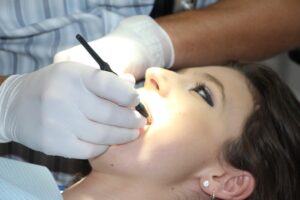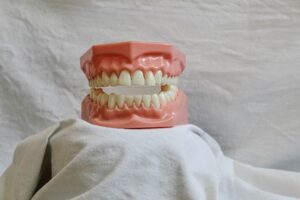Rhinoplasty, commonly known as a nose job, is a surgical procedure for individuals who wish to improve the appearance or function of their nose. People seek rhinoplasty for various reasons, including:
– Cosmetic Enhancement: Those who are unhappy with the size, shape, or symmetry of their nose. Common concerns include a hump on the bridge, a bulbous tip, or a nose that appears too large or small in proportion to the rest of the face.
– Breathing Problems: Individuals with functional issues such as a deviated septum, nasal obstruction, or other structural abnormalities that affect breathing may benefit from functional rhinoplasty.
– Injury or Trauma: Those who have sustained trauma to the nose that has resulted in deformity or impaired function.
– Congenital Issues: People born with nasal deformities may require rhinoplasty to correct structural problems and enhance facial balance.
Rhinoplasty is ideal for those seeking either aesthetic improvement or functional correction. At Clínica Birbe, we customize each rhinoplasty procedure to match the individual’s facial features, ensuring natural and balanced results.
Is There a Certain Age for Rhinoplasty?
While there is no specific age limit for rhinoplasty, it’s essential that the nose has fully developed before undergoing surgery. For females, this typically occurs around 15-16 years of age, while for males, it may be closer to 17-18 years. It’s important to wait until the nose has matured to avoid disrupting growth, which could affect the final result.
However, rhinoplasty can be performed well into adulthood, and many individuals in their 30s, 40s, and beyond choose this procedure to address concerns they’ve had for years or due to aging-related changes in the nasal structure. Age is less of a concern as long as the patient is in good health and has realistic expectations about the outcome.
For younger patients, we carefully evaluate not only their physical readiness but also their emotional maturity to ensure they are making an informed decision about such a significant procedure. Older patients often opt for rhinoplasty to address nasal drooping or other age-related changes, combining it with other facial rejuvenation procedures.
How is the Planning for Rhinoplasty?
The planning phase of rhinoplasty at Clínica Birbe is one of the most critical steps to ensure a successful outcome. The process begins with a detailed consultation where we assess your nasal structure, facial proportions, and overall health. During this consultation, we take the time to understand your concerns and goals, whether they are aesthetic, functional, or both.
Here’s a typical planning process:
– Medical Evaluation: We review your medical history, including any breathing problems or previous nasal surgeries. Your overall health is also assessed to ensure you are a good candidate for surgery.
– Facial Assessment: Your nose is carefully evaluated in relation to your other facial features, ensuring that the planned changes will harmonize with your face. We use advanced imaging technology, to show potential outcomes, helping you visualize how the surgery may change your appearance.
– Customized Surgical Plan: Based on your goals and anatomy, a personalized surgical plan is developed. This may involve addressing the bridge, tip, nostrils, or internal structures to improve breathing. Rhinoplasty can involve reducing or adding to the nasal structure, reshaping the cartilage, or adjusting the angle of the nose.
– Pre-Surgical Instructions: We provide you with a list of pre-surgical instructions, such as avoiding certain medications or supplements, stopping smoking, and preparing for recovery.
Good planning is essential for achieving a natural and aesthetically pleasing result, and at Clínica Birbe, we emphasize a collaborative approach, ensuring your input is central to the planning process.
What Are the Risks and Complications Associated with Rhinoplasty?
Rhinoplasty is a highly specialized procedure, and while complications are rare, it’s important to be aware of the risks. Common risks and complications include:
– Infection: Though rare, infection is a potential risk after surgery. We provide detailed post-operative care instructions to reduce this risk.
– Breathing Issues: Some patients may experience difficulty breathing through the nose after surgery, although this is usually temporary. Rhinoplasty is often performed to improve breathing, but improper technique could result in functional problems.
– Unsatisfactory Aesthetic Results: Rhinoplasty is highly individualized, and while we strive for perfection, there is a small chance the results may not fully meet the patient’s expectations, which could lead to a need for revision surgery.
– Scarring: While most rhinoplasty incisions are hidden inside the nose, open rhinoplasty may leave a small scar at the base of the nose, which usually heals well and becomes inconspicuous.
– Numbness: Temporary numbness or altered sensation in the nasal skin is common but usually resolves as healing progresses.
– Swelling and Bruising: Post-surgery swelling can last for several weeks, and full results might not be visible until the swelling subsides completely, which can take several months.
At Clínica Birbe, we use advanced techniques to minimize risks and complications. We also provide thorough post-operative follow-up to monitor healing and ensure patient satisfaction.
Is Preparation Treatment Required Before Rhinoplasty?
Yes, preparation before rhinoplasty is essential to ensure optimal surgical outcomes and smooth recovery. At Clínica Birbe, we guide each patient through a personalized preparation process, which typically includes the following:
– Medical Clearance: You may need to undergo certain tests or evaluations, particularly if you have underlying health conditions.
– Medications: We will advise you to stop taking blood-thinning medications such as aspirin, certain supplements (like vitamin E), and anti-inflammatory drugs at least two weeks before surgery to reduce the risk of excessive bleeding.
– Smoking Cessation: If you are a smoker, you will need to stop smoking at least several weeks before surgery. Smoking affects blood circulation and can impair healing, increasing the risk of complications.
– Hydration and Nutrition: Staying well-hydrated and maintaining a balanced diet is important for healing. We may also recommend certain vitamins or supplements to boost recovery.
– Skincare: While less common in rhinoplasty than in other facial procedures, patients with specific skin conditions may be asked to follow a skincare regimen prior to surgery.
Preparing properly for rhinoplasty helps reduce the risk of complications and ensures you’re ready for the recovery process.
What Are the Different Types of Rhinoplasty?
There are several different types of rhinoplasty, each designed to address specific concerns, whether aesthetic, functional, or both. At Clínica Birbe, we offer various rhinoplasty techniques to suit individual needs:
1. Closed Rhinoplasty: In this technique, all incisions are made inside the nostrils, leaving no visible external scars. It is often used for patients requiring minor adjustments, such as slight reshaping of the bridge or tip. Recovery tends to be quicker with less swelling.
2. Open Rhinoplasty: Open rhinoplasty involves a small incision on the columella (the tissue between the nostrils) to allow for greater visibility and access to the underlying nasal structures. It is ideal for more complex surgeries, including those requiring significant reshaping of the tip or correction of major structural issues.
3. Functional Rhinoplasty: This procedure focuses on improving nasal function, often to correct breathing problems caused by a deviated septum, collapsed nasal valves, or other structural abnormalities. Functional rhinoplasty may be combined with aesthetic rhinoplasty to improve both form and function.
4. Revision Rhinoplasty: Some patients seek revision rhinoplasty to correct issues from a previous nose surgery. This type of rhinoplasty is more complex and requires advanced skills, as the nasal structures may be weakened or scarred from the initial surgery.
5. Septoplasty: A procedure specifically designed to correct a deviated septum, which can cause breathing difficulties. This surgery focuses on improving airflow through the nasal passages and is often performed alongside cosmetic rhinoplasty.
6. Ethnic Rhinoplasty: This is a specialized form of rhinoplasty that respects and enhances the natural ethnic characteristics of the nose while addressing aesthetic or functional concerns. The goal is to maintain the cultural identity of the patient while achieving their desired look.
Each type of rhinoplasty is tailored to the individual’s anatomy and goals, ensuring results that are harmonious with the rest of the face.
What Happens After Rhinoplasty?
The recovery process after rhinoplasty requires patience, as it can take several months for the final results to become fully visible. Here’s what typically happens:
– Initial Recovery: After surgery, you will likely experience swelling, bruising, and some discomfort, especially around the eyes and nose. Pain is usually mild and can be managed with prescribed medications. A nasal splint may be applied to protect the nose during the initial healing phase.
– Swelling and Bruising: Swelling will be most prominent during the first few days but should begin to subside within the first two weeks. However, minor swelling may persist for several months, particularly around the tip of the nose.
– Breathing: It is normal to feel congested and experience some difficulty breathing through the nose due to internal swelling and nasal packing (if used). This will improve as the swelling decreases.
– Stitches and Splints: Any external stitches are typically removed after about a week, along with the nasal splint.
– Return to Normal Activities: Most patients can return to work or school within 1-2 weeks, but strenuous activities, including exercise, should be avoided for at least 4-6 weeks to prevent complications.
Full healing takes time, and while you’ll see noticeable improvements within the first few weeks, the final results can take up to a year as the subtle swelling in the nose resolves.
What Would Be the Cost of Rhinoplasty?
The cost of rhinoplasty varies from 4500 to 7000 depending on several factors, including the complexity of the procedure, the surgeon’s experience, and the geographic location.



